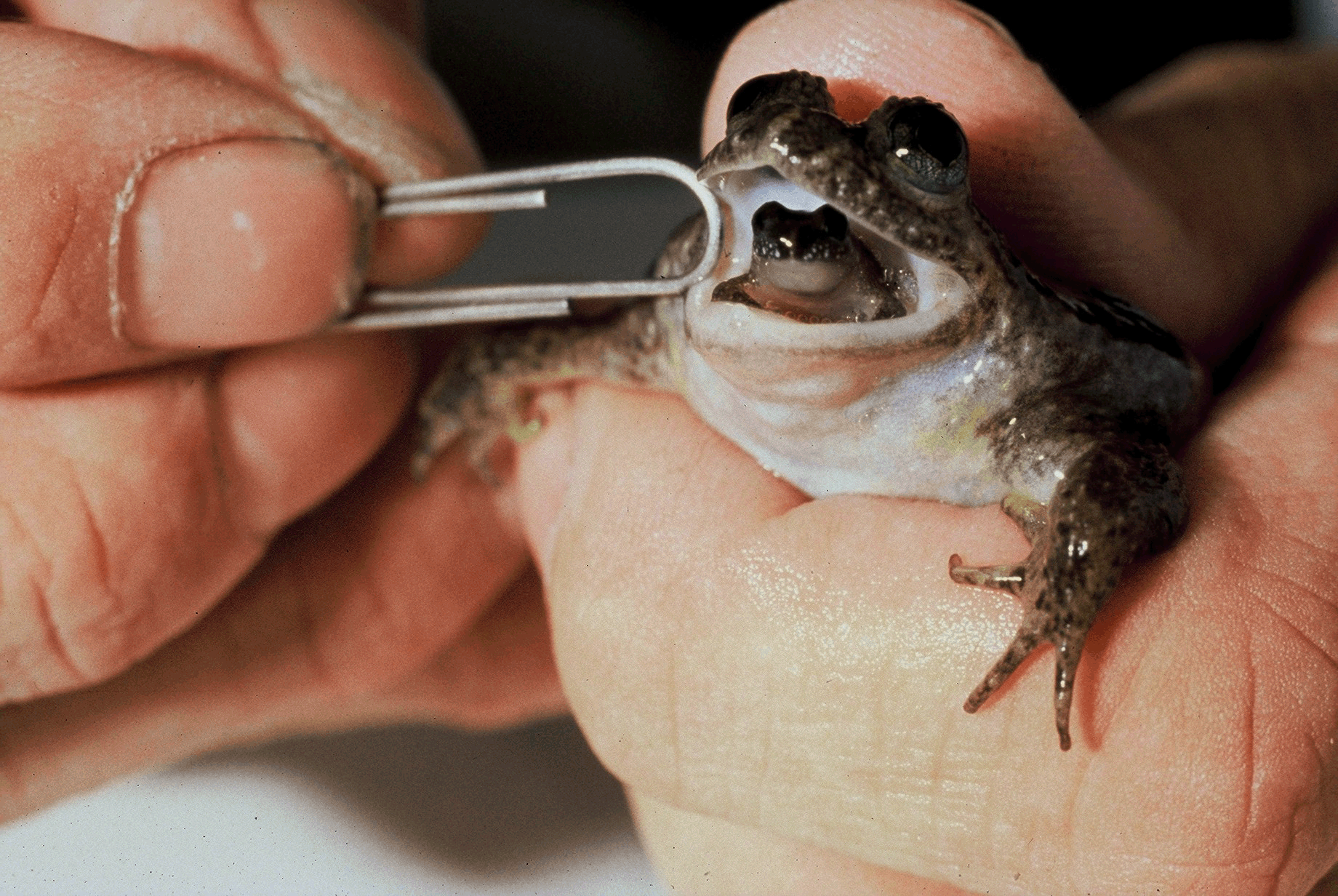What devilry is this?
Let’s start this post with a picture:

What’s going on here? Some photoshop jiggery-pokery? An amphibian version of Russian dolls? A severe case of indigestion? Sadly, none of the above. Even more sadly, it’s the first and last picture of a gastric-brooding frog (Rheobatrachus silus) ‘giving birth’.
Like the Stephens Island wren, the gastric brooding frog was in the extinction fast-stream and a little over seven years following its discovery it was gone forever. Reasons for its demise are numerous and varied, including meddling scientists shoving paper-clips down their throats, killer fungi and greedy gold-miners.
Discovered in 1973 in the mountains of southeast Queensland, Australia, this little frog was a biological wonder because the female nurtured its young in its stomach, hence the catchy ‘gastric-brooding’ moniker. At some point following the fertilisation of her eggs the female swallowed as many of them as she could and safe in the confines of their mother’s belly, the eggs hatched into tadpoles and the tadpoles grew into tiny froglets. The stomach, what with its acids, etc. is not the first place that springs to mind as the ideal place to raise the kids, but fortunately, this amphibian had a splendid little trick. When the young were in the stomach the secretion of the powerful acids was blocked by a chemical known as a prostaglandin and the eggs and tadpoles could develop without the fear of being digested. Naturally, this stomach-brooding trick wasn’t without a price and for the duration of her ‘gestation’, the female frog had to go without food.
Apart from this singular adaptation, very little else is known about this amphibian as the last specimen was seen in 1981 and repeated searches of its old haunts have drawn a blank, so, it’s presumed to have hopped into the big dusty book of Earth history.
Read more in Extinct Animals:
Leave a Reply